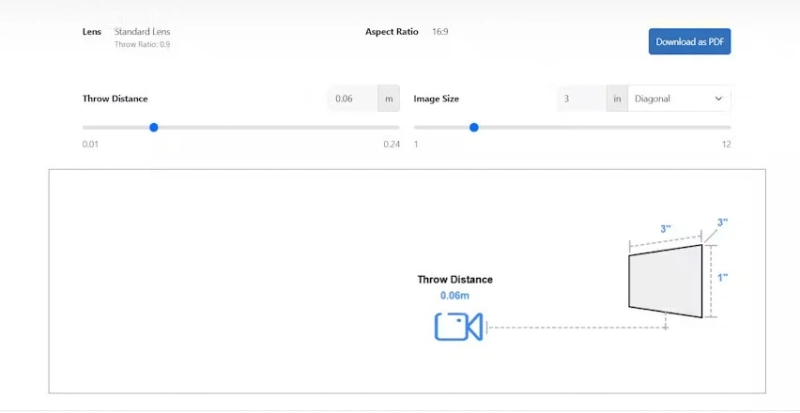The ability to display 3D content has long been associated with projectors, particularly in cinemas, educational spaces, and immersive event environments. XTEN-AV provides AV professionals with tools to design and simulate display systems, helping organizations evaluate the capabilities of both video walls and projectors for their specific applications. A key question that often arises is whether Video Wall vs Projector technology can support 3D content in a comparable way. Understanding the differences in how these displays handle 3D is essential for making the right choice for entertainment, training, or visualization environments.
Introduction to 3D Projection
Projectors have been the traditional choice for 3D content. They work by projecting two slightly different images onto a screen, one for each eye. Special glasses then filter these images to create a perception of depth, allowing viewers to experience three-dimensional visuals.
There are several 3D projector technologies including active shutter, passive polarized, and anaglyph systems. Each method relies on the projector’s ability to deliver high frame rates and precise synchronization between the images for the left and right eyes. Projectors are widely used in home theaters, educational institutions, and simulation environments because they can create large 3D displays that fully immerse the audience.
LED Video Walls and 3D Content
LED video walls are composed of individual panels tiled together to form a large display. These panels emit their own light and offer high brightness, contrast, and color accuracy. Video walls excel in delivering vibrant 2D content, but their native technology is not inherently designed for stereoscopic 3D like projectors.
There are some ways video walls can display 3D-like effects:
- Simulated 3D Effects: Through software, content can be designed with depth cues, motion parallax, and shading to create a sense of three-dimensionality on a flat LED display. This approach does not require glasses but only gives a visual impression of 3D.
- Autostereoscopic Panels: Some advanced LED walls can use lenticular lenses or parallax barrier technology to create glasses-free 3D. However, these solutions are expensive, complex, and typically limited to smaller screens rather than full-scale video walls.
- Glasses-Based 3D: In theory, two synchronized video walls could be used to display left-eye and right-eye images separately, but this is rarely practical due to high cost, alignment challenges, and the need for specialized hardware.
While LED video walls can create immersive visual experiences, achieving true stereoscopic 3D like a projector remains challenging.
Brightness and Frame Rate Considerations
One advantage of projectors for 3D is their ability to deliver high frame rates necessary for active shutter 3D systems. These systems alternate images for each eye rapidly to maintain smooth motion and depth perception. LED video walls, while bright and consistent in 2D, may struggle to replicate the required frame rates for active 3D stereoscopy without custom hardware.
In addition, projectors can use polarized or shutter glasses to separate the left and right images, providing a more convincing 3D experience. Video walls typically lack this mechanism, limiting their ability to deliver authentic stereoscopic depth.
Viewing Distance and Immersion
Projectors are ideal for immersive 3D experiences because they can produce very large images that fill the viewer’s field of vision. This contributes significantly to the perception of depth and realism.
Video walls are usually wall-mounted and viewed from a distance appropriate for 2D content. While they can display large, high-resolution visuals, the flat nature of the panels limits the impact of stereoscopic 3D. In Video Wall vs Projector scenarios, projectors still have the edge in creating full-field immersive 3D environments.
Use Cases for LED Video Walls with 3D Content
While LED walls may not replicate projector-style 3D perfectly, they are still effective in applications where depth perception is less critical:
- Data Visualization: Animated graphs, charts, and simulations can use depth cues to convey complex information.
- Retail and Marketing Displays: Content with simulated 3D effects can attract attention and enhance engagement.
- Education and Training: Virtual tours or interactive 3D models can be displayed with software-based depth effects, even on flat panels.
In these scenarios, video walls provide high brightness, excellent color, and large-scale visuals that can enhance the perception of depth without requiring glasses.
Limitations and Challenges
Attempting true stereoscopic 3D on LED walls comes with several challenges:
- Hardware Complexity: Dual-image systems or autostereoscopic panels are expensive and difficult to implement.
- Content Creation: 3D content must be specifically designed for the chosen display method.
- Viewer Experience: Without specialized glasses or hardware, depth perception is limited, especially for multiple viewers.
Projectors remain the more practical solution for authentic 3D experiences, particularly when immersive depth and audience-wide viewing are priorities.
Conclusion
When comparing Video Wall vs Projector for 3D content, projectors remain superior in delivering true stereoscopic 3D experiences. LED video walls excel in brightness, color, and large-scale visuals, and can simulate depth using software effects, but they are not inherently designed for glasses-based or autostereoscopic 3D.
XTEN-AV enables AV professionals to simulate and plan display setups, including LED walls and projectors, to determine how best to present 3D or 3D-like content in a given space. Understanding the capabilities and limitations of each technology ensures that organizations can select the right solution for immersive training, entertainment, or visualization purposes.
Read more: https://getbacklinkseo.com/which-offers-better-resolution-led-wall-or-projector/



